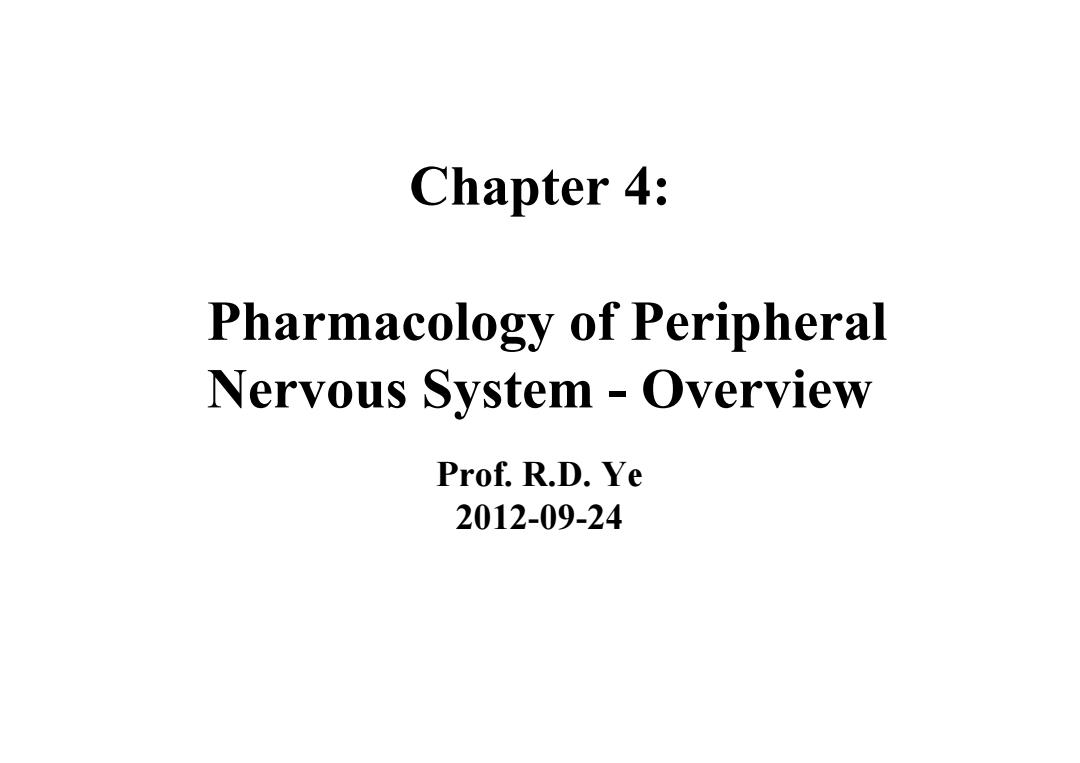
Chapter 4: Pharmacology of Peripheral Nervous System Overview Prof.R.D.Ye 2012-09-24
Chapter 4: Pharmacology of Peripheral Nervous System - Overview Prof. R.D. Ye 2012-09-24
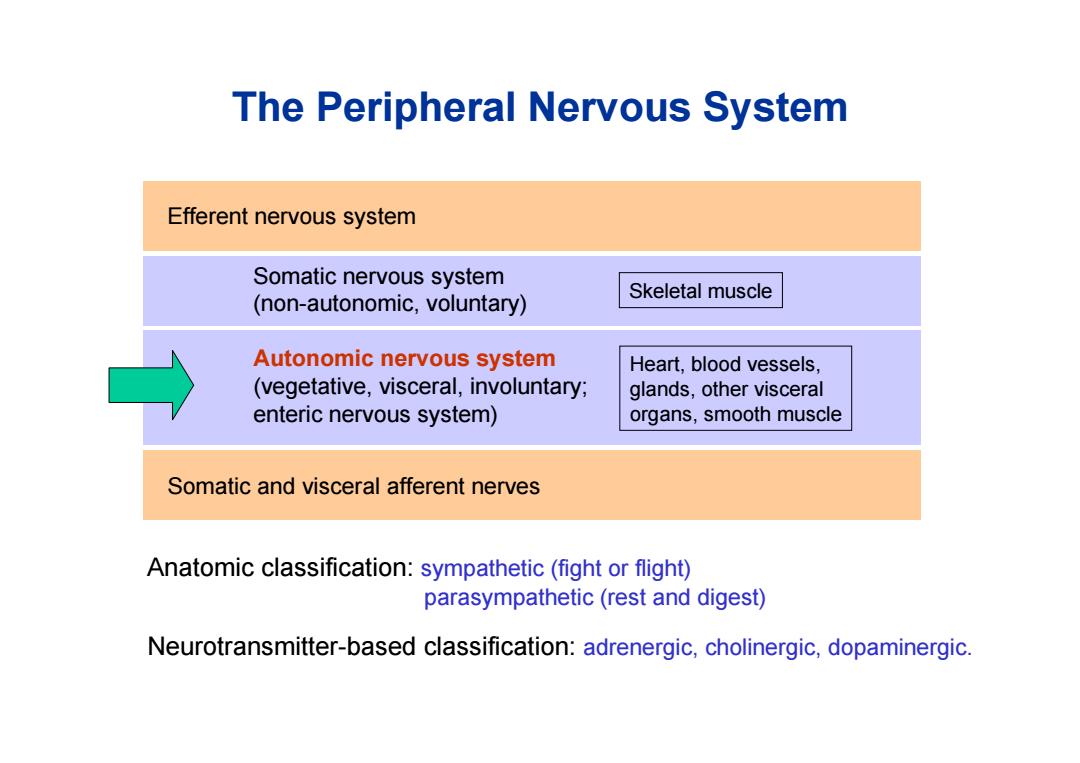
The Peripheral Nervous System Efferent nervous system Somatic nervous system Skeletal muscle (non-autonomic,voluntary) Autonomic nervous system Heart,blood vessels, (vegetative,visceral,involuntary; glands,other visceral enteric nervous system) organs,smooth muscle Somatic and visceral afferent nerves Anatomic classification:sympathetic (fight or flight) parasympathetic(rest and digest) Neurotransmitter-based classification:adrenergic,cholinergic,dopaminergic
Efferent nervous system Somatic nervous system (non-autonomic, voluntary) Skeletal muscle Autonomic nervous system (vegetative, visceral, involuntary; enteric nervous system) Heart, blood vessels, glands, other visceral organs, smooth muscle The Peripheral Nervous System Somatic and visceral afferent nerves Anatomic classification: sympathetic (fight or flight) parasympathetic (rest and digest) Neurotransmitter-based classification: adrenergic, cholinergic, dopaminergic
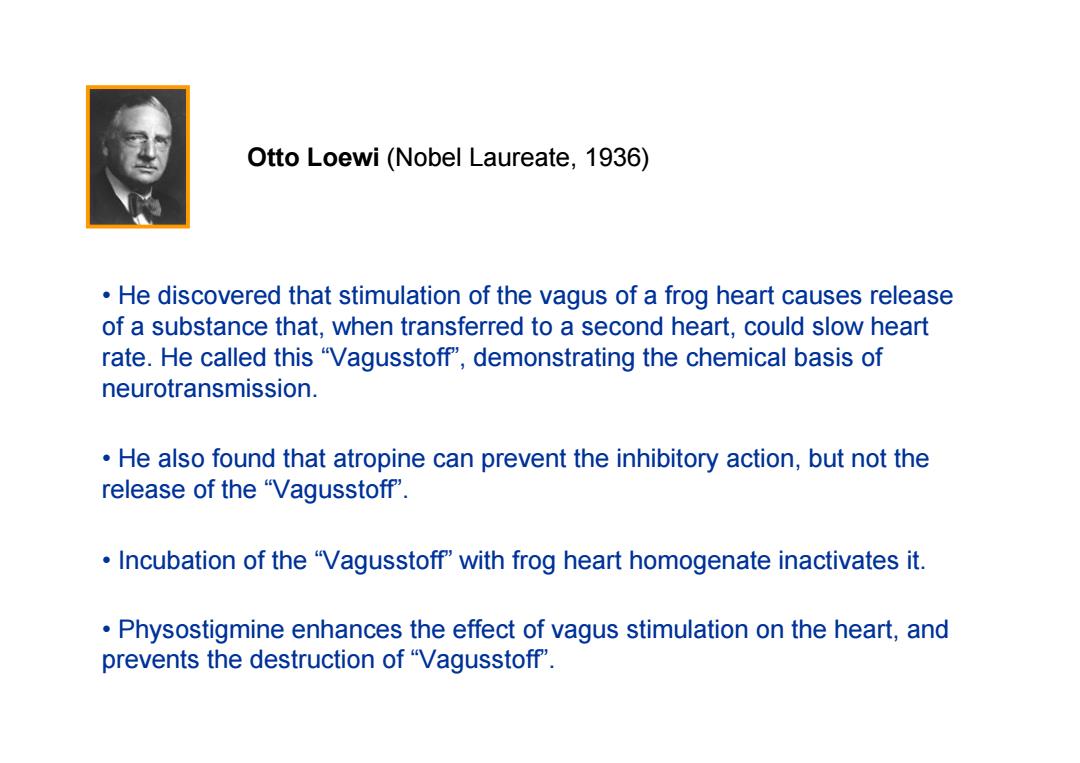
Otto Loewi (Nobel Laureate,1936) He discovered that stimulation of the vagus of a frog heart causes release of a substance that,when transferred to a second heart,could slow heart rate.He called this "Vagusstoff",demonstrating the chemical basis of neurotransmission. He also found that atropine can prevent the inhibitory action,but not the release of the "Vagusstoff. Incubation of the "Vagusstoff with frog heart homogenate inactivates it. Physostigmine enhances the effect of vagus stimulation on the heart,and prevents the destruction of "Vagusstoff
• He discovered that stimulation of the vagus of a frog heart causes release of a substance that, when transferred to a second heart, could slow heart rate. He called this “Vagusstoff”, demonstrating the chemical basis of neurotransmission. Otto Loewi (Nobel Laureate, 1936) • He also found that atropine can prevent the inhibitory action, but not the release of the “Vagusstoff”. • Incubation of the “Vagusstoff” with frog heart homogenate inactivates it. • Physostigmine enhances the effect of vagus stimulation on the heart, and prevents the destruction of “Vagusstoff
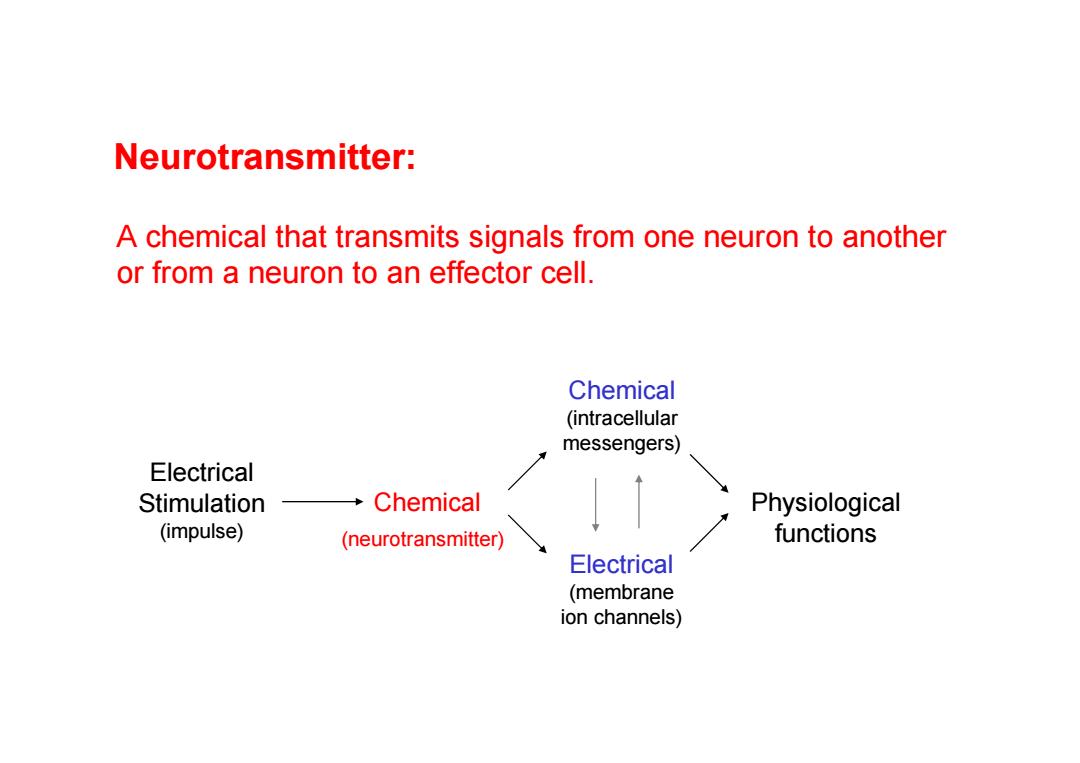
Neurotransmitter: A chemical that transmits signals from one neuron to another or from a neuron to an effector cell. Chemical (intracellular messengers) Electrical Stimulation Chemical Physiological (impulse) (neurotransmitter) functions Electrical (membrane ion channels)
Electrical Stimulation (impulse) Chemical (neurotransmitter) Neurotransmitter: A chemical that transmits signals from one neuron to another or from a neuron to an effector cell. Chemical (intracellular messengers) Electrical (membrane ion channels) Physiological functions
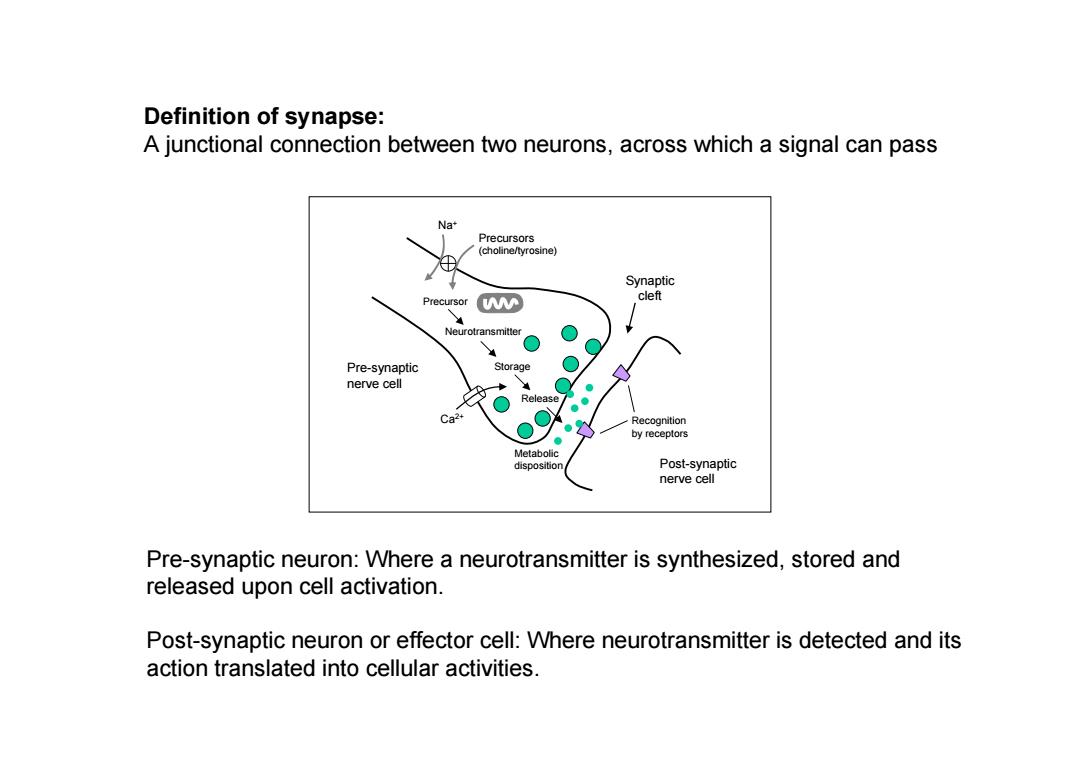
Definition of synapse: A junctional connection between two neurons,across which a signal can pass Na Precursors (choline/tyrosine) Synaptic Precursor cleft Neurotransmitter Pre-synaptic Stora nerve cell Ca Recognition by receptors Metabolic dispositior Post-synaptic nerve cell Pre-synaptic neuron:Where a neurotransmitter is synthesized,stored and released upon cell activation. Post-synaptic neuron or effector cell:Where neurotransmitter is detected and its action translated into cellular activities
Pre-synaptic nerve cell Post-synaptic nerve cell Synaptic cleft Ca2+ Na+ Precursors (choline/tyrosine) Definition of synapse: A junctional connection between two neurons, across which a signal can pass Precursor Neurotransmitter Storage Release Recognition by receptors Metabolic disposition Pre-synaptic neuron: Where a neurotransmitter is synthesized, stored and released upon cell activation. Post-synaptic neuron or effector cell: Where neurotransmitter is detected and its action translated into cellular activities